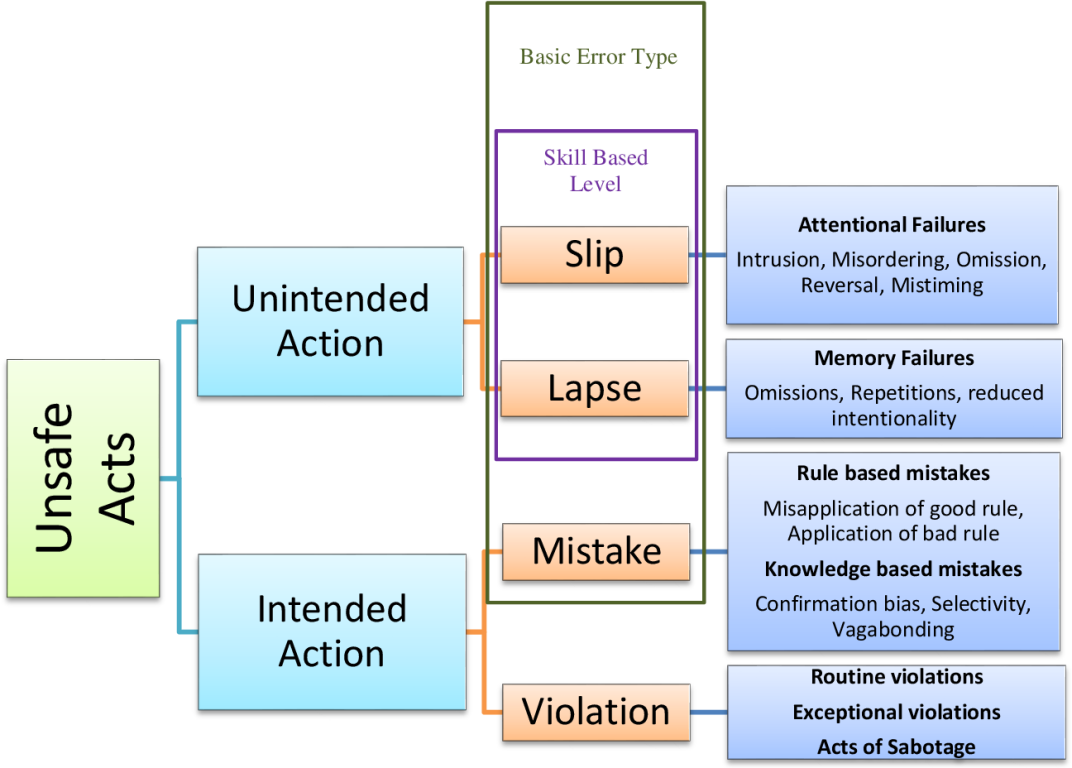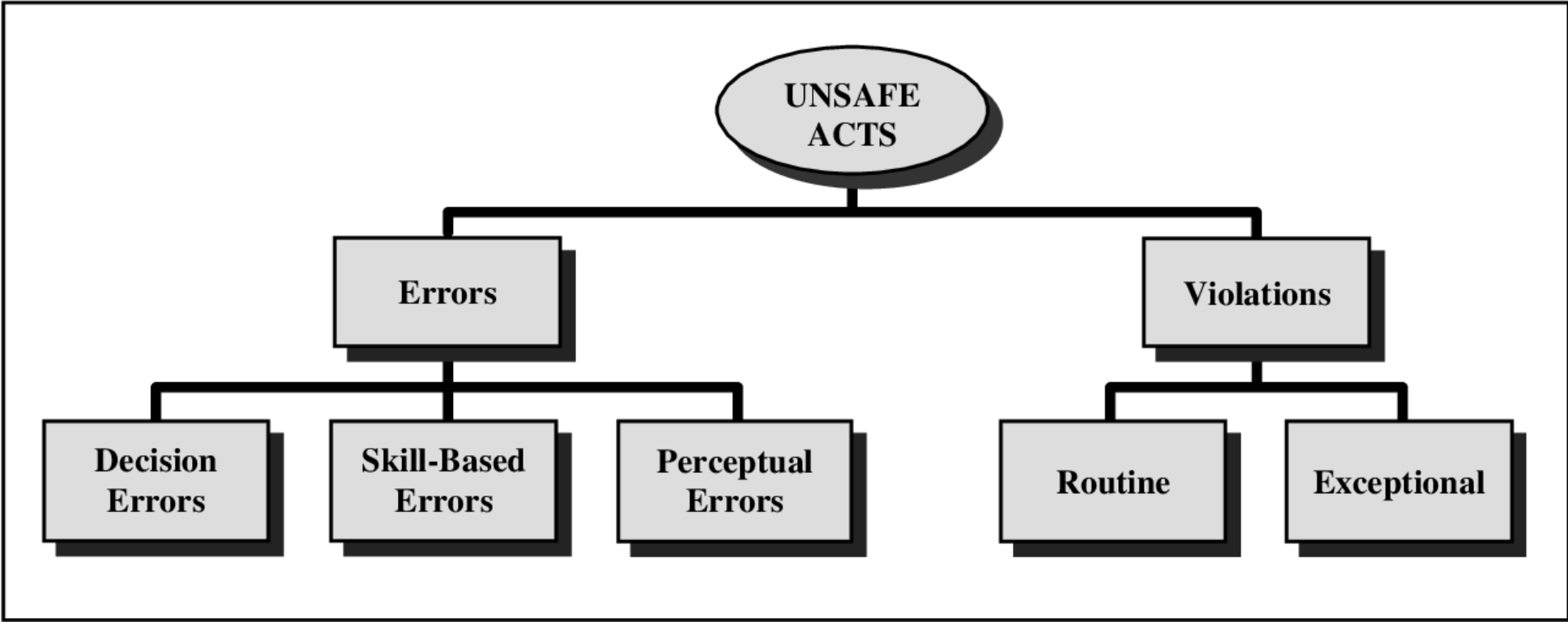Human Error and Safety
Human error and accident management is the variety of methods and measures designed to reduce inappropriate human-machine interactions.
In order that organizations learn from accidents, incidents, it is necessary to recognize that human error will never be eliminated, only moderated.
Why human error occurs?
There are several view points - one perspective is that human error can be traced to inadequacies within the system design and that humans inherit a work system that has been failing for some time and the human is rarely the sole cause of error.
(Wiegmann & Schappell, 1987)
Inadequacies within the system fall into 3 groups:
- Task Complexity - when task requirements exceed human capacity
- Error like situations - focuses on error which is orientated around the cognitive processing required to perform a task, (Manchi, 2013)
- Individual differences - physiological and psychological
 Also consider the action classifications referencing an operators action or inaction.
Also consider the action classifications referencing an operators action or inaction.Errors of omission - when an operator fails to undertake the required task
{Errors of commission} - when an action is performed, but it is inappropriate
{also timing, sequence and selection errors}
Controls and Measures
- Subjective Workload Assessment Technique (SWAT)
- Workload Analysis Tools - Workload is a hypothetical construct that represents the mental cost incurred by the human operator to achieve a particular level of performance (Hart & Staveland, 1988)
- Mathematical modelling on human reliability
- Hierarchical Task Analysis - break down of task into segments and analyze each step in the sequence
